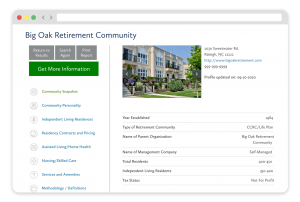Caring for an older adult who has mobility limits, chronic illness, or dementia can raise big questions: How can they stay connected, safe, and active … and how can family caregivers get regular, reliable breaks? Adult day services (ADS), also called adult day care, adult day health services, or adult day services centers (ADSC), are one solution that can address these and other challenges.
What are adult day services?
According to the Centers for Disease Control and Prevention, the nation’s 3,100 adult day services programs provide social, nutritional, and health-related support services to about 182,000 participants, often in a group setting. Staffed by an array of professional caregivers, adult day programs typically serve people who live at home but need some form of assistance during the day.
Importantly, such programs help adults receive the specific services they need without having to reside full-time in a long-term care facility, per the National Adult Day Services Association (NADSA). While adults of any age in need of care services can take part in ADS programs, the majority (68%) are age 65 or older, with 18% ages 65–74, 31% ages 75–84, and 19% age 85 and older, according to 2022 CDC data.
Services vary from program to program but may include things like group activities, meals, medication management, and help with activities of daily living (ADLs), and transportation to/from the center. Some even provide participants with the physical or occupational therapy they require. Many centers also offer specialized dementia-friendly programs. Some are run by community-based organizations while others are private businesses.
Who is a good fit for adult day services?
Adult day services can be well-suited for people who need supervision or care for part of the day but want to remain living at home for as long as possible. This includes older adults with mobility limitations, chronic medical conditions, mild-to-moderate cognitive impairment (such as dementia), or who are lonely and need regular socialization.
They also may be a good option for families who need daytime caregiver coverage while working. Additionally, such programs can provide a much-needed mental and physical break for unpaid caregivers, sometimes referred to as respite care (more on this later).
>> Related: Family Caregiving Can Present Stressful Challenges
How programs typically work
ADSCs typically operate much like childcare programs: weekdays (sometimes with limited weekend options) for a set number of hours — often 6 to 8 hours per day. Adult day services participants usually arrive in the morning and join structured group activities like exercise, memory groups, arts/crafts, or music programs. In addition, participants will usually eat a supervised snack and/or meal. Transportation is often available to and from the center for an extra fee, as well.
Adult day care centers range from low-acuity social models, emphasizing socialization and supervision, to health-focused models, which prioritize necessary clinical services. Depending on the program’s offering, participants may be able to receive any required clinical services, such as medication management, wound care, and/or therapies. Many centers can even design individualized care plans and coordinate with the participant’s medical providers.
>> Related: The Sandwich Generation: Stuck Between Aging Parents, Young Children
Benefits for adult day program participants
Being part of an ADS program can improve daily life of older adults in several ways:
- Reduced isolation and improved mood: Regular social contact, meaningful activities, and a routine can lift mood and slow functional decline for older adults. Recent research shows that adult day programs can help alleviate social isolation and improve wellbeing.
- Structured activity and physical engagement: Adult day care programs often include gentle exercise, cognitive stimulation, and group activities that help maintain mobility and mental sharpness. Numerous studies show this type of stimulation can be particularly beneficial for those with dementia, as well as their caregivers.
- Health monitoring: For ADSCs offering health services, staff can monitor participants’ vitals, manage medications, and potentially identify changes early, which may prevent emergency visits while supporting safer aging at home.
>> Related: Continuing Care at Home Gives Older Adults the Best of Both Worlds
Respite care and more: ADSCs benefit family caregivers
One of the most valuable roles of adult day services is respite care: scheduled, reliable time off for unpaid family caregivers. Respite care can allow the family caregiver to work, run errands, sleep or relax, socialize, or attend to their own health needs.
Research and caregiver advocacy groups note several specific caregiver benefits of utilizing adult day care programs:
- Lower stress and caregiver burden: Having predictable daytime care coverage for an aging loved one reduces the continuous demands on family members. Specifically, research shows utilizing ADS for respite care is linked to lower perceived burden for family caregivers of dementia patients.
- Better ability to continue working: Family caregivers who are employed often use adult day services to maintain their job hours while ensuring their loved one is safe and cared for.
- Support and education: Some adult day services centers provide supportive services for family members like education, counseling referrals, and care coordination. A 2025 study found, for dementia caregivers in particular, such supportive services improve both their caregiving skills and their confidence.
>> Related: A Break for Family Caregivers: Adult Day Care and Other Respite Care Options
Costs and who pays for ADS
Costs for adult day care vary by model, location, and services. Using Genworth’s CareScout Cost of Living Survey data, we see that the U.S. national median cost for adult day care for 2025 is around $100 per day, which translates to roughly $2,230 per month if used every weekday. Exact local rates can be higher in urban or high-cost locations and may have additional fees for things like transportation or medical services.
The most common payment method for adult day services is private pay, i.e., out of the pocket of the participant or their loved ones. There are some other potential ways to cover the cost of ADS, however, including:
- Long-term care insurance (LTCI): Many LTCI policies cover adult day services, but check your contract to verify.
- Medicaid: CDC data shows that 79% of all ADSC participants (including those under age 65) had some or all of their services paid by Medicaid, though coverage varies widely by state and program.
- Veterans benefits: Certain Veterans Administration (VA) programs may help pay for respite or adult day care for eligible Veterans.
- Local/aging services funds: Area Agencies on Aging or community programs sometimes offer subsidies or sliding-scale fees. Learn more by visiting the Eldercare Locator website or calling 1-800-677-1116.
>> Related: A Stark Contrast in “Peak 65” Baby Boomers’ Retirement Savings Pictures
Tips for choosing an adult day care program
The National Adult Day Services Association (NADSA) offers a 7-step checklist with tips for finding an adult day services center that meets the needs of your loved one:
- Identify the care recipient’s unique needs: Decide what matters most for your loved one and for you … things like safety, social activities, personal care, therapies, health monitoring, meals, and/or any special needs such as dementia care. Also think about what support you need as a caregiver, like time off, work coverage, or transportation.
- Find local ADSCs: Search NADSA’s database, contact your local Area Agency on Aging, use the Eldercare Locator website (1-800-677-1116), or look up state ADS associations and local senior centers. Once you narrow in on options, be sure to review websites and program details.
- Schedule a visit: Arrange tours of one or more centers to see the environment, meet staff, and observe activities in person.
- Ask the right questions: Bring a list of questions about services, staff qualifications, safety, transportation, and daily routines, things like:
-
- What is your staff-to-participant ratio, and who delivers any clinical care?
- How do you handle medication administration and medical emergencies?
- Can you support someone with (specific condition, e.g., Parkinson’s, moderate dementia, etc.)?
- What does a typical day look like? Can I observe or arrange a trial day for my loved one?
- Check references: Talk with families who currently or previously used the center to learn about their firsthand experiences and satisfaction.
- Give it a trial run: Try the program for several days. Allow time for your loved one to adjust to new surroundings and routines.
- Stay involved: Keep in touch with staff, ask questions, and take comfort in knowing your loved one is safe and engaged.
A supportive option for older adults and their caregivers
Adult day services are an under-used but flexible tool in the caregiving toolbox. These programs bring benefits like social connection, structured activity, and health monitoring for participants. For family caregivers, they provide crucial assistance and/or scheduled respite. Put together, adult day care can help people remain at home longer.
Program availability and costs vary depending on the area, however. As our population ages, policymakers at the federal and local level, as well as within the senior living industry, need to advocate for solutions like ADS, which benefit those who need assistance and their caregivers. Given that Medicaid is used by a majority of participants age 65+, this backing is especially important for the large percentage of the older population that is economically disadvantaged.

FREE Detailed Profile Reports on CCRCs/Life Plan Communities
Search Communities






